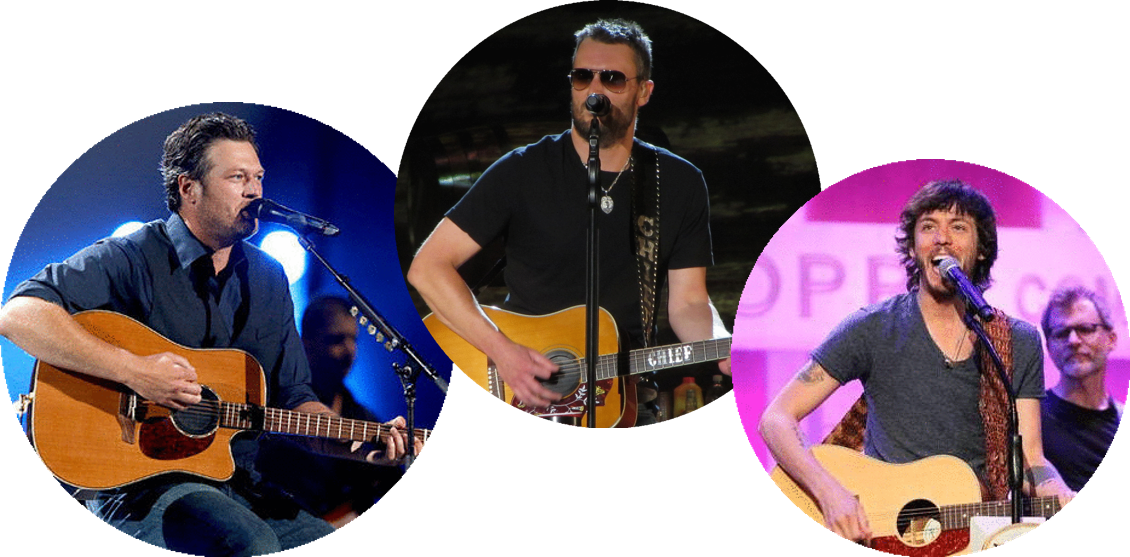This is the first in a three part series examining the differences between Country and CHR.
A lot of programmers who built their careers in CHR have made the move to Country. Bringing CHR-style imaging, engaging promotions and fresh personalities has helped Country stations topple heritage competitors, reinvigorate brands and attract younger listeners since the 80s.
But if you’re one of those CHR pros now programming Country, does it make sense to approach your new music the same way you would for CHR? Do Country listeners warm up to new music and get tired of hearing the biggest hits the same way CHR listeners do?
Last year, we examined how listeners consume new music in the CHR universe when they control the music they hear on streaming services such as Spotify and YouTube. Now, we examine how Country fans consume new music. Specifically, we analyzed 26 consecutive weeks of Billboard Top 10 Country Streaming Songs Chart (from March 28th, 2015 through September 19th, 2015) to determine the age of the Country songs listeners play most when they pick which songs they hear. We then pegged each song’s vintage to when it first entered any of Billboard’s Country charts, so that we can see when each song first entered the public consciousness, not when the record company released it.
What did we learn? If you treat Country as if it’s CHR from Nashville, you’re making a mistake.
It typically takes 13 weeks for Country listeners to warm up to a new song.
That’s a slower warm up time than CHR, where it typically takes eight weeks for a song to become a Top 10 most streamed song. Eric Church’s “Like a Wrecking Ball” took 13 weeks to become a Top 10 hit on the Country streaming chart. Blake Shelton’s “Sangria” took 14 weeks. “Buy Me a Boat” from Chris Janson took 20 weeks to work its way up to the Top 10 most streamed Country songs list.
Sure, there are some songs that become big hits faster. Luke Bryan’s “Strip It Down” and “Kick the Dust Up” both hit Top 10 in streaming after only four weeks. Keith Urban’s “John Cougar, John Deere, John 3:16” and Thomas Rhett’s “Crash and Burn” took only eight weeks. For most songs, however, if you’re used to CHR, you need to slow down your timeframe to match your audience’s speed—your listeners typically need 13 weeks to warm up to new songs.
Bottom line: If you’re giving up on new songs before 13 weeks, you’re not giving them enough time to grow.
Country listeners typically want to keep hearing the big hits for 28 to 44 weeks
In CHR, listeners are typically sick of songs once they’re between 20- and 28-weeks-old. That’s when listeners generally stop playing CHR hits on Spotify and YouTube. That’s also when the Integr8 New Music Research Hitcycle® measure shows listeners think most CHR songs are past their prime. In CHR, moving songs out of currents once they’re 26 weeks old is generally the right move. In Country, however, that’s exactly when listeners are typically most into hit songs. Fifty five percent (55%) of the Top 10 most streamed Country songs are between 13- and 36-weeks-old. In comparison, the majority of the Top 10 most streamed songs in CHR are 8- to 24-weeks-old.
“Like A Wrecking Ball” by Eric Church didn’t drop out of the Top 10 Country streaming chart until it was 31 weeks old. Billy Currington’s “Don’t It” stayed Top 10 until it was 39 weeks old. Kelsea Ballerini’s “Love Me Like You Mean It” was Top 10 all the way until its 42nd week on the charts.
Bottom line: If you’re automatically moving Country songs out of your current categories at 26 weeks, you’re moving songs when listeners still want to hear them a lot. Most Country songs stay Top 10 until 28 to 44 weeks.
In our next CHR vs. Country blog post, we’ll examine another key difference between the two; the role of recurrents.



This is a great post!
I know allot of PD’S who program country like CHR. Jingles, Imaging elements, voice talant etc. and move songs after 30 weeks in rotation.
You think for part 3 you could give us imaging and production pros on country imaging and jingles advice? I’m and imaging assistent for Iheart GR and B93 is in my opinion the hottest when it comes to imaging. Heck, our jingles don’t have any country instrumentation at all!
Thank you so much for taking time to read our blog, Cody! Since Integr8 Research is solely focused on helping stations pick the right new music, we’re probably the last people who should give advice on jingle packages and imaging elements. Radio is a craft—a blend of science and art—and I’ve always been in awe of the artistic talent the production & imaging directors I’ve known were somehow naturally born with. It’s part of what makes great radio magical!
Hey, interesting post. Two things:
1. Did you take into account the amount of airplay the most streamed country songs had received each week, rather than just the number of weeks old they were? The tricky thing about this is country songs tend to gain airplay at a much slower rate than Top 40 songs, so a 13-week-old country song might have burned significantly less on listeners than a 13-week-old Top 40 song because the country song may be only #20 or so on the airplay charts, while the Top 40 song may already be near #1 and getting a significantly higher amount of airplay already at 13 weeks. Meaning, radio listeners have already heard the Top 40 song that is 13 weeks old much more than a 13-week-old country song.
This may explain quicker burn rate in general for Top 40 songs. They get quickly blasted into heavier rotation, while country songs tend to work their way up into higher levels of rotation gradually over a longer span of weeks. Ceteris paribus, you may find that country songs and Top 40 songs burn on listeners at about the same rate (after approximately the same number of spins).
2. The fact that you used streaming charts to determine advice for radio programmers is troublesome. Everyone in radio knows, your streaming audience is not the same as your radio audience. You have no idea who is streaming those songs. It may be entirely different people than those who are listening to your radio station.
Case in point, you cite “Like a Wrecking Ball” staying in the Top 10 on the streaming chart until it was 31 weeks old. Sure there were a lot of people streaming the record, but the radio callout surveys for that record told a much different story. Research was very poor for the record early on, yielding high negatives and a high burn rate.
Seems the premise of this study may be flawed. You studied a streaming chart to analyze the burn rate of radio listeners, when streaming and radio are two very different things.
Hi Daniel,
Thanks for reading and contributing to the discussion!
Our method for determining each song’s vintage (described above) is based on when each song first enters the public consciousness, whether through listeners hearing the song on the radio, streaming it, or buying it, not when the record company first released it or Mediabase first detected it. Sufficient spin counts from a sufficient number of radio stations definitely is a huge factor to getting songs on country fans’ radars.
The value of examining listeners’ streaming behavior is that we can see how listeners consume music when they’re in control of the music they hear. Stay tuned for our next post, which will compare streaming behavior with Country radio airplay in greater detail. (Spoiler alert: It’s more similar than you might think.)